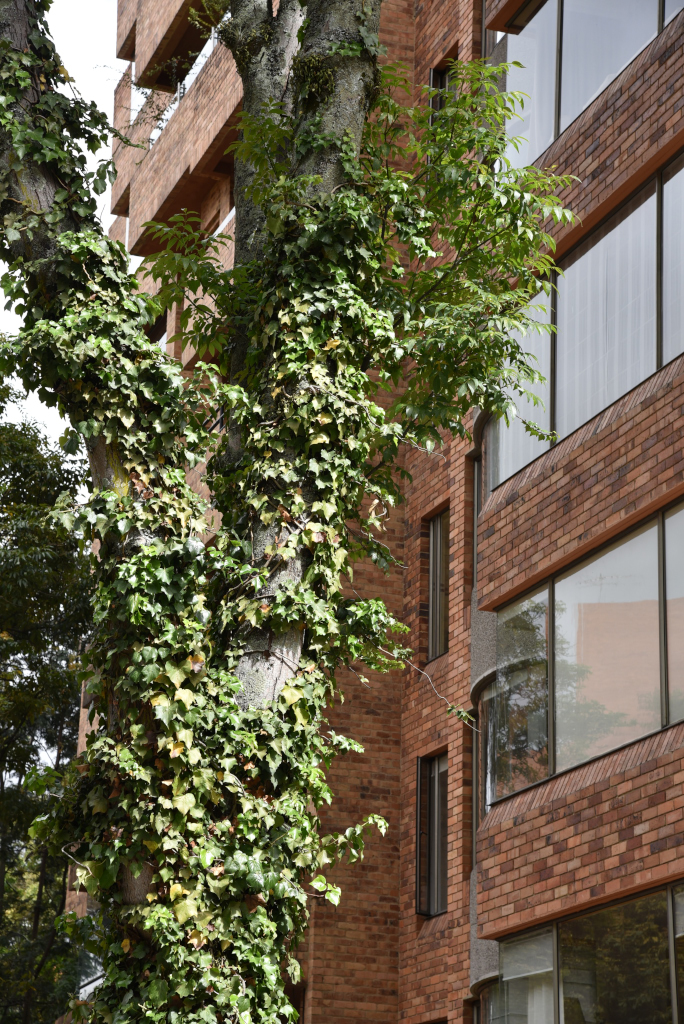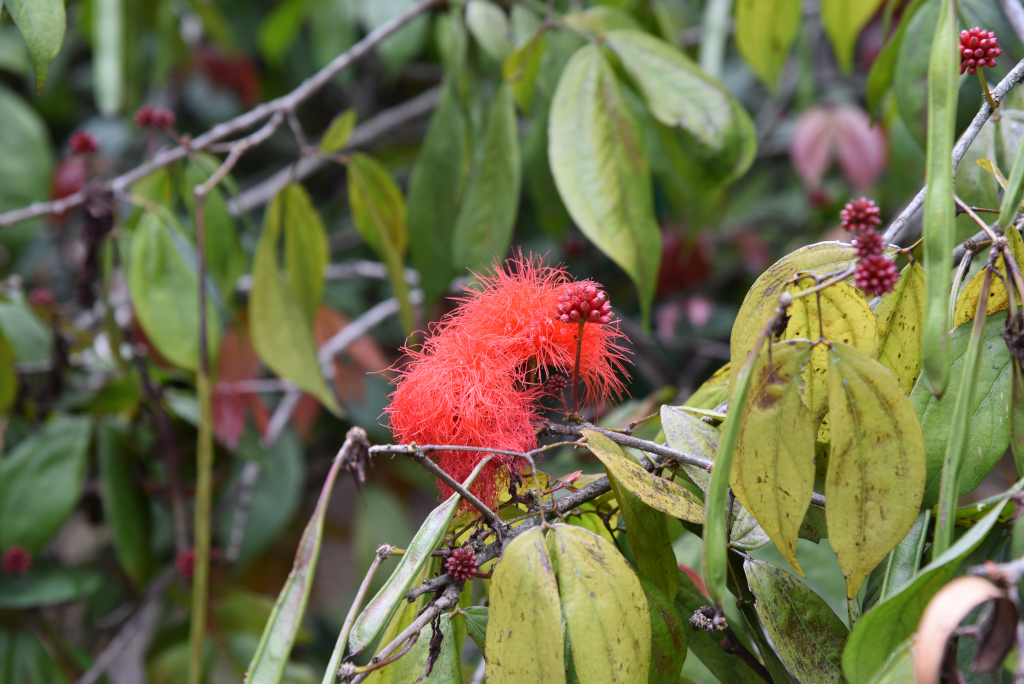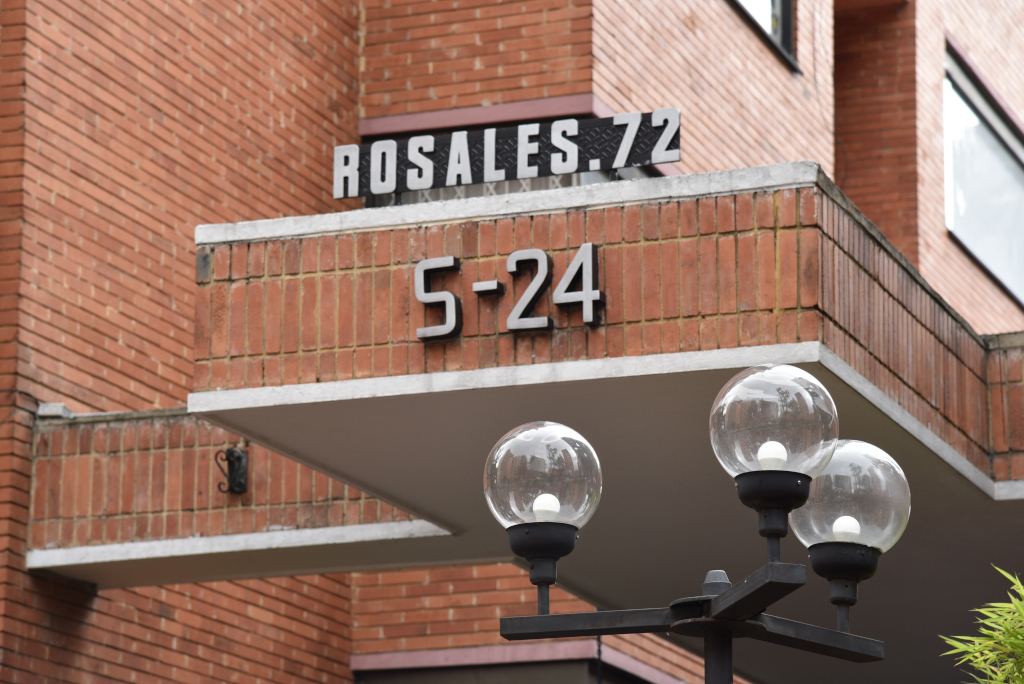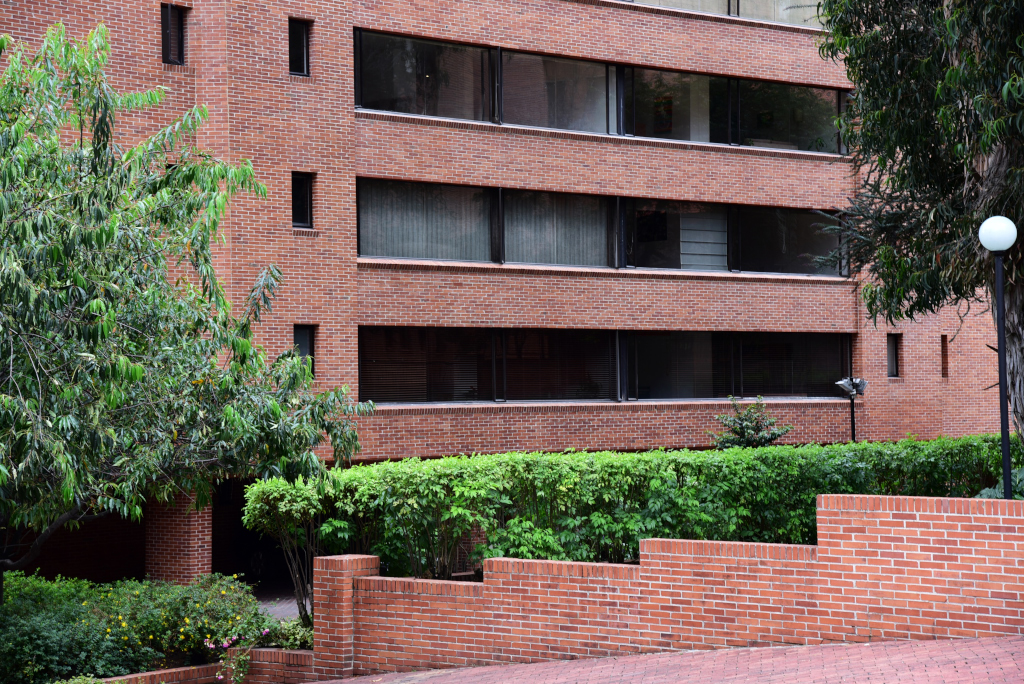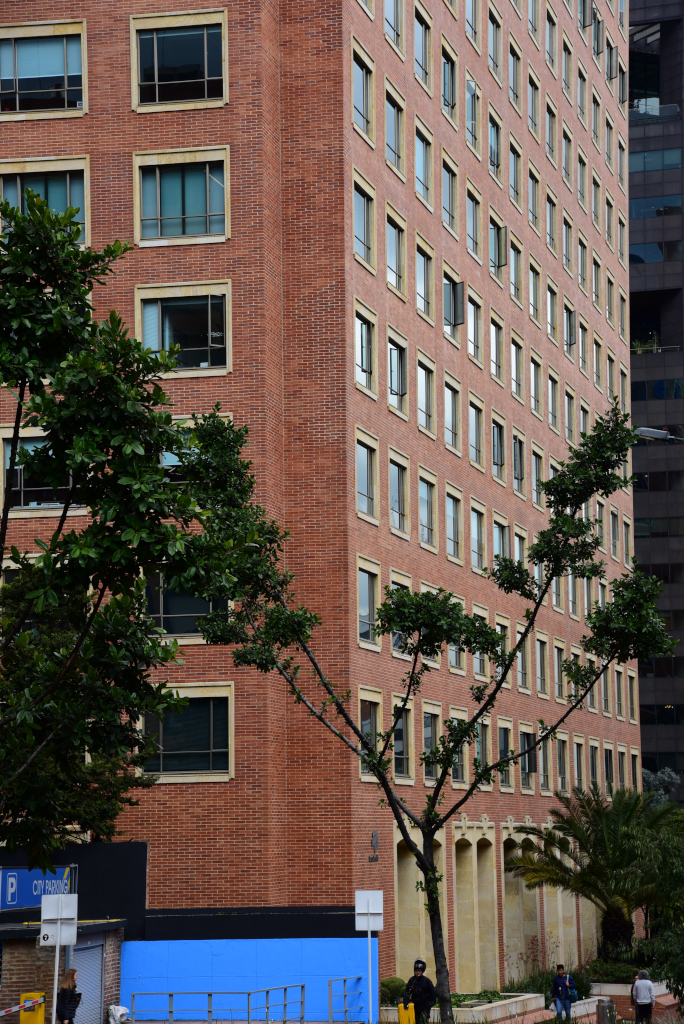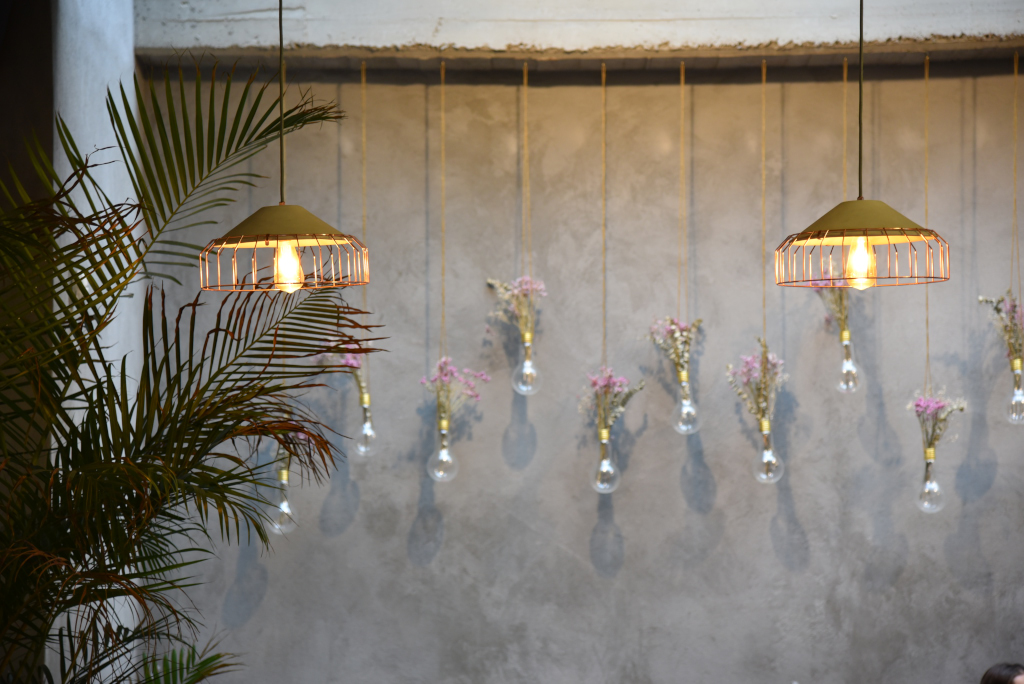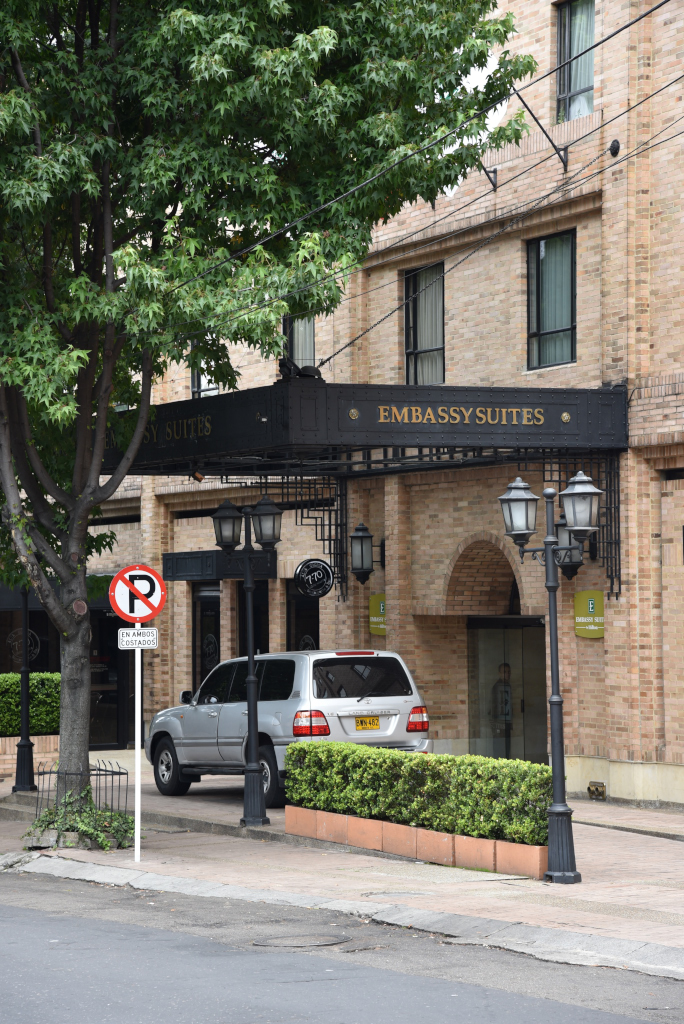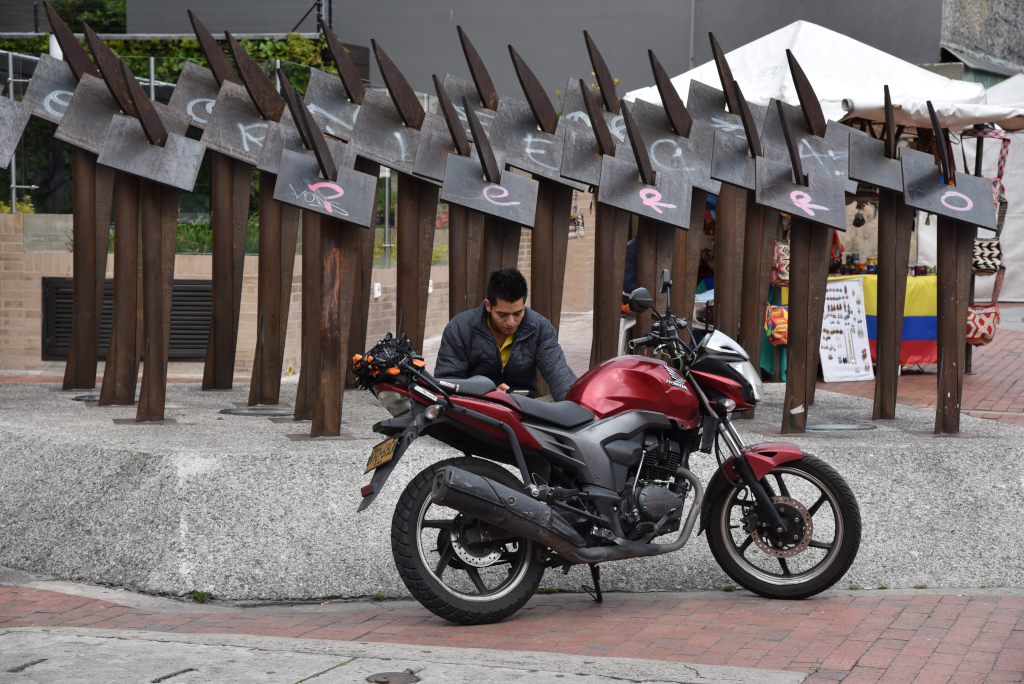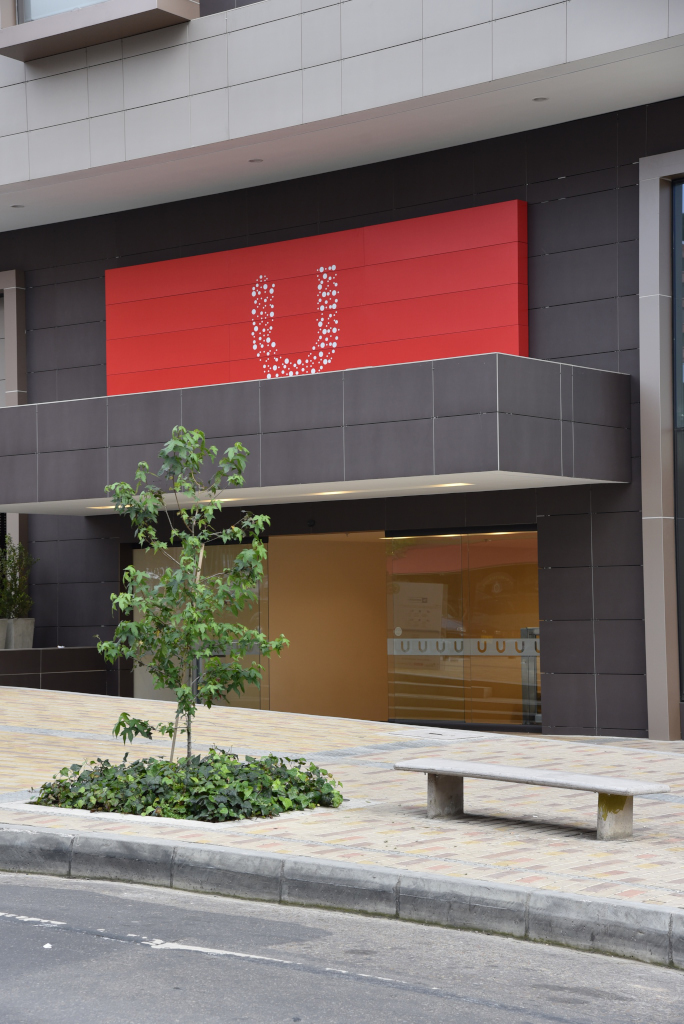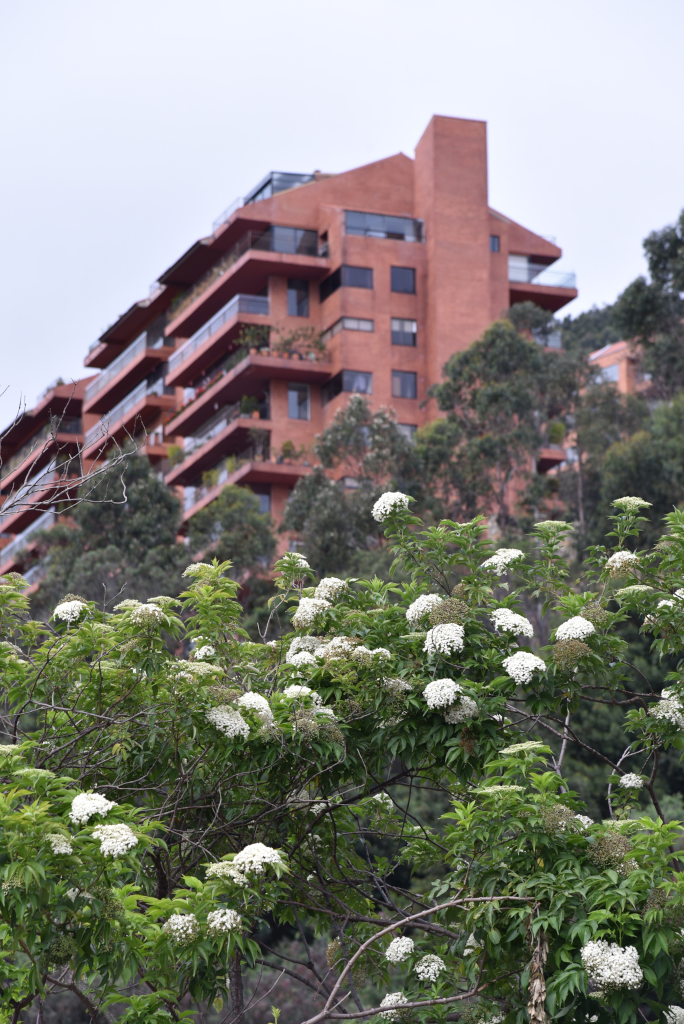March 9, 2018
So, I finally made it, even if yesterday was far more challenging than I would have liked. I wake up to the noise of traffic, the room dark, the king-sized futon comfortable, the apartment also comfortable and spacious, far too much for my needs, although an indulgence I was very much looking forward to on my return to the city. Having arrived late yesterday evening, I did not have the opportunity to buy any food, which will mean trekking downhill to the retail area around Carrera 7.
The walk reveals the unique face of Bogotá’s luxury neighborhoods, consisting of bristling residential towers largely comprised of brick, claustrophobic in the manner they are jammed into the steep hillsides, the narrow serpentine roads weaving among the towers a perfect place to get hit by the traffic racing around the blind corners. The structure evoke little in the line of luxury, if anything, a drab utilitarian aesthetic. But each building is fronted by small, artfully designed garden plots with creatively arranged hedges, grasses, and flowering plants.
Calle 71A, the nearest cross-street to Carrera 1, weaves downhill towards Carrera 7, its tightly woven curves typical of this labyrinthine neighborhood that is so easy to get lost in. But today I am not taking chances, and am staying on Calle 71A until the landscape becomes flatter and the streets more rectilinear, at which point it also becomes much harder to get lost. The neighborhood is redolent in tree ferns, fique, palms of varying sizes, irises, what look like red camellias, poppies, lily of the Nile, calla lilies, and so on …
The quebrada that runs along 71A provides a beautiful compliment to the vertical urban maze, a small creek running through a narrow patch of forest also home to pretty flowering plants and exotic trees. Young police officers loiter in the park, looking suspiciously at me as I amble through the green space. On the street, it seems the bulk of pedestrians are food delivery people, cleaning and gardening staff, dog walkers, or police. Who actually lives in these buildings?
On the relatively level Calle 5 stretch the posh eating establishments and shops of Zona G, largely unique to the area, given the stratospheric prices being commanded and an unequivocal response to the consumer demands of the wealthy that inhabit the area. Not that the exquisite food offered is anything to complain about, and certainly very welcome after endless repetition of the same boring empanadas, arepas, carne asadas, pollo dorado, etc. Breakfast at Masa, bland scrambled eggs and a mix of breads and pastries, varying from stale to astonishingly good, good coffee, enshrouded in what appears to be sugar cane, local businesspeople and glitterati here to be seen. The delicatessen shops alone offer an incredible variety of imported as well as exclusive local foods. But first, the more pedestrian Carulla, where I can fill my daypack with not quite as expensive groceries prior to slogging up the steep hill to return to my apartment.
I had been highly motivated to explore the exciting privileged neighborhoods to the north of the Zona G, however, things are a bit more complicated … The goal is to walk northwards towards Usaquén along Carrera 7, which seems to separate the commercial spaces in the northeast of the city from the residential side. Closer to Zona G, the area is vibrant, with a mix of commercial, residential, institutional, copious numbers of vehicles clogging the streets, busy office workers on the pavement, street vendors, expansive cafés, bucolic parks, historic churches, typical signs of a vibrant city. Some of the edifices follow radical modernist aesthetics, although even the street level features innovative artistic installations. Arresting flower gardens, the unusual foliage of trees providing a stunning counterpoint to the glass and metal towers.
But further north, the lively character peters out. To the west of Carrera 7, bland residential or commercial architecture, bleak parks, and a general sense of desolation, Carrera 7 itself inundated with relentless traffic. The largely brick-and-glass towers rise stolidly to the east above Carrera 7, high into the green space above, at times large swaths of the residential area nothing more than forest. And trudging to the north reveals absolutely nothing, other than an urban space that could be at best termed utilitarian.
But despite the pretentions of wealth – or the fact of wealth – there is no sense of neighborhood, ambience, no sense of locale, sensibility or atmosphere which would encourage a desire to be here. In fact, much of the city is the same, a random collage of characterless housing on a vast scale, an incidental city intended to house some 8 million people of diverse origin. Moreover, there are no businesses of any sort along Carrera 7 that reflect a sense of neighborhood, rather, random businesses, empty space, broken pavement, an endless surge of traffic, air pollution, honking horns, and tired greenery, with the occasional park that seems completely out of place. The stragglers on the road seem to be rushing along to somewhere, but never content to be in their current place. In the end I could well have just walked around the area I am housed in and never bother going beyond.
A woman on the sidewalk assures me that Usaquén is still far away, in fact, the area begins around Calle 116. So no, there is no way I am going to be walking that far. There are endless buses, but then it turns out that they are mostly part of the TransMilenio system, which requires a smart card, which I don’t have. I could either take a taxi or one of the less frequent buses that ambles along. And as luck has it, I manage to flag down a white bus, squeeze into one of the narrow seats, and even better, get instructions as to how to use the bus and where to descend from one of the passengers.
The introduction to Usaquén is the Hacienda Santa Barbara, an expansive shopping mall set in an inconsistently-executed colonial-style complex, with myriads of generic chain-style shops or smaller, gaudier outlets, not that any mall environment would fill me with much optimism.
Across the road, soaring glass towers set amidst an incongruous urban wasteland. Behind the mall, Usaquén achieves more of a coherent identity, with an outdoor market flogging all means of generic trinkets and souvenir items, although a few of the vendors attempt to make an effort at presenting unique and memorable artifacts.
Narrow alleys with single or two-level structures in a vague colonial style emanate towards an expansive plaza that culminates in a modest church and neo-classical structure dedicated to a college. The plaza would represent a typical setting in a small Colombian town, replete with charm, but here it has a somewhat harder edge, never mind the transient population visible, that is also visible through the streets of the trendy shops and restaurants further along. The occasional sun of the day is long gone, and the light is low, the mood dour, and the temperature dropping, a typical Bogotá moment …
The commercial core of Usaquén seems to be the grid of restaurants and funky shops, decidedly more alternative in nature than the posh places that line Calle 5 in Zona G, catering to a younger and hipper crowd, although hardly less pretentious. The high prices automatically exclude anyone living in the real world in this city, but then the areas to the north are intended for the vaunted elites. This part of Usaquén is reminiscent of an American college town, largely dedicated to pizza and burger establishments, in a sophisticated physical envelope, characterized by all manner of architectural and interior design whimsy.
The typical brick residential developments are spread along the receding verdant hills above, although without the density seen east of Carrera 7 further to the south. Imaginative murals adorn the walls down below, these of a more artistic nature, in contrast to the much more political imagery presented further into the city. And surprisingly, there are even a few businesses catering to the quotidian, standing in stark contrast to the boutique nature of the businesses located in the grid.
The return back from Usaquén provides an unfortunate conclusion to a somewhat dismal afternoon. The traffic congestion is now at an apogee along Carrera 7, and despite the constant stream of TransMilenio buses heading south, I cannot take these buses as I don’t have a TransMilenio card, which is apparently only sold in the TransMilenio stations, which are nowhere near here. Forget about taxis: they are all taken. Every taxi I look at has passengers. And while non-TransMilenio buses occasionally seem to pass that I could pay cash fare on, they are either packed and don’t stop, or are heading somewhere other than downtown. So I walk, block upon block, my hands now numb with the cold, but I keep walking, some 45 blocks later the welcome glamour and activity of Zona G emerging in the darkness.







